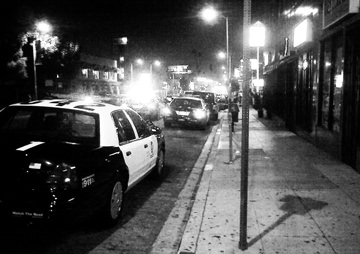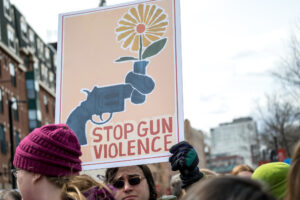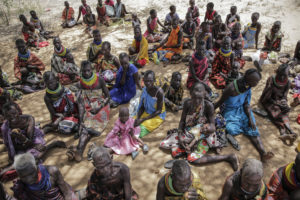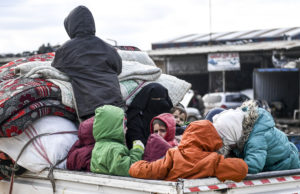The Best Reporting on Children With Post-Traumatic Stress
This is what happens to children and teenagers exposed to violence in their own neighborhoods. kevin dean (CC BY-NC-SA 2.0)
kevin dean (CC BY-NC-SA 2.0)
By Lois Beckett, ProPublicaThis piece originally ran on ProPublica.
When people think of post-traumatic stress disorder, they often focus on military veterans. But there’s growing evidence that PTSD is also a serious problem for American civilians, especially those exposed to violence in their own neighborhoods. Researchers in Atlanta found that 1 out of 3 inner-city residents they interviewed had experienced symptoms consistent with PTSD at some point in their lives.
We’ve put together a collection of some of the best reporting on PTSD in children and teenagers exposed to community violence. The stories here take a nuanced look at the intersection of trauma, poverty and racism. Not all stories about PTSD in high-violence neighborhoods meet that standard. This May, a local CBS affiliate released a segment on trauma in Oakland youth that referred to PTSD as “hood disease.” The anchor who used that term on air later apologized.
Among our recommendations here are magazine stories, radio segments, a book based on a doctor’s interviews with shooting victims, and a documentary film. You can also see our selection of the best reporting on PTSD and the U.S. military.
Please include your suggestions for other stories in the comments.
Brain Development Altered by Violence, Washington Post, May 1999
After the Columbine shootings, this article looked broadly at post-traumatic stress among American children. “The Columbine students are the lucky ones,” the story concluded. “Most child witnesses to violence in America live in inner cities, where shootings occur repeatedly, and where parents often are as traumatized by them as children. And counselors rarely come calling on them in the aftermath of horrors, as they have in Littleton.”
Children Who Survive Urban Warfare Suffer from PTSD, Too, San Francisco Chronicle, August 2007
Eleven-year-old Tierra’s brother was murdered two weeks before she began sixth grade. She wrote her brother’s name on the cover of her notebooks. Her grades dropped. She started getting into fights. And she wasn’t the only one: At her San Francisco middle school, a third of students said they had seen or knew someone killed with a gun. A look at how post-traumatic stress affects children’s school performance — and at the difficulties of getting treatment.
The Poverty Clinic, The New Yorker, March 2011 [subscription required]
Experiencing traumatic events at a young age doesn’t simply affect a child’s emotional health. There’s increasing evidence that childhood trauma is linked to serious medical problems in adulthood. A look at how a clinic in San Francisco’s Bayview neighborhood is trying to treat toxic stress in children and transform how we think about pediatric care.
Doctor Works to Get Young Men Out of ‘Wrong Place,’ NPR, February 2010
In the early 1990s, as violence in America reached unprecedented heights, Dr. John Rich watched as young black men returned repeatedly to Boston City Hospital’s emergency room with life-threatening wounds. Many doctors and nurses assumed that the young men were doing something to get themselves shot. Trying to understand how to prevent more violence, Rich began interviewing the young men after they had left the hospital. He found that many of the patients were suffering from post-traumatic stress — and that the reasons they had been shot were not what he had expected. NPR interviews Rich, who was awarded a 2006 MacArthur genius grant, and provides an excerpt from his book, Wrong Place, Wrong Time: Violence in the Lives of Young Black Men.
Welcome to the City of Post-Traumatic Stress Disorder, Philadelphia Magazine, August 2012
Between Jan. 1, 2001 and May 29, 2012, a total of 18,042 people were shot in Philadelphia—and 3,852 were murdered. That’s more than the number of Americans killed in the war in Afghanistan. Steve Volk looks at the burden of violence on a single city, tracing personal stories, along with the emerging research from Philadelphia’s trauma experts.
In Country, In City, This American Life, January 2013
Reporter Alex Kotlowitz interviews two men with post-traumatic stress: an Afghanistan war veteran and a young man who was shot in one of Philadelphia’s most dangerous neighborhoods.
Children of Violence, Los Angeles Times, September 1989
What happens to children who have to step over dead bodies on their way to school? Four years before gun violence in America reached its peak, the Los Angeles Times did an in-depth story about the impact of shootings on children in South-Central Los Angeles. The story looks at early interventions, including what may have been the nation’s first “grief and loss” program for elementary children.
Harper High School, Parts One and Two, This American Life, February 2013
At Chicago’s Harper High School, 29 current students and recent alumni were shot over the course of a single year. Starting in late summer 2012, reporters from This American Life spent five months at Harper. They document how teachers, students and parents dealt with the constant threat of violence, how they tried to heal from past tragedies — and how they worked to prevent more shootings. PTSD is not a central focus of the story, but it’s very much in the background.
The Interrupters, Kartemquin Films, 2011
In Chicago’s most dangerous neighborhoods, “violence interrupters” try to understand the unfolding conflicts between local teenagers and prevent them from escalating into killings. The role of trauma is one of the themes of the film. The full documentary is worth watching. You can also start with the trailer, or read an Essence Magazine profile of Ameena Matthews, one of the violence interrupters featured.
For resources on understanding the symptoms of PTSD and finding treatment you can consult the National Center for PTSD’s guide to helping children and teenagers, and their guide to PTSD caused by community violence.
Related coverage: The PTSD Crisis That’s Being Ignored: Americans Wounded in Their Own Neighborhoods, Chart: Trauma Hospitals Fail to Screen for Civilian PTSD, and Myth vs. Fact: Violence and Mental Health.
Your support matters…Independent journalism is under threat and overshadowed by heavily funded mainstream media.
You can help level the playing field. Become a member.
Your tax-deductible contribution keeps us digging beneath the headlines to give you thought-provoking, investigative reporting and analysis that unearths what's really happening- without compromise.
Give today to support our courageous, independent journalists.






You need to be a supporter to comment.
There are currently no responses to this article.
Be the first to respond.